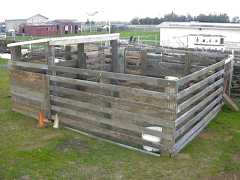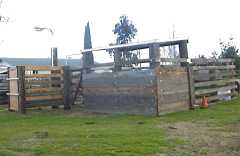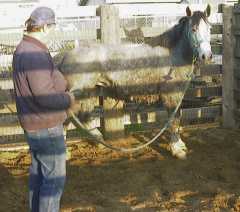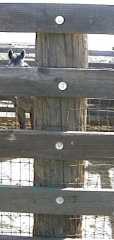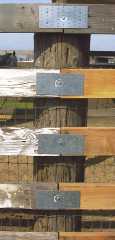|
We constructed our pen mostly out of scrap materials, but what we used was very heavy duty. The posts are all made from salvaged utility poles which we got from the local telephone company. The fences are made from used 2x6 lumber and the gates are framed with 4x4 and 4x6 scraps and faced with 2x6 or 2x12 lumber. Our fence rails are placed on the outside of the poles so that all hardware is on the outside. A new horse will likely have to wear a halter for the first few days and we don't want anything present within the pen that he could get hung up on. All the lumber is lag bolted into the utility poles for strength. This attachment ensures that the boards won't work loose when hit. Nailing plates are used to tie the ends of fence boards together and the nailing plates are similarly lag bolted into the poles. To minimize wood chewing, we chose to line the inside of the pen with heavy gauge woven wire no-climb fencing, tacking the wire on the outside of the poles and then attaching the fence rails to the poles (sandwiching the wire between the poles and the fence rails.) Most telephone poles are pressure treated and horses usually won't bother them. |
2x6 rails
| ||
Continue to Part TwoPress "Back" to return to the page that brought you hereGo to Case Study SectionReturn to Training SectionReturn to Wild Horse MentorsReturn to KBR World of Wild Horses and BurrosGo To
| |||

